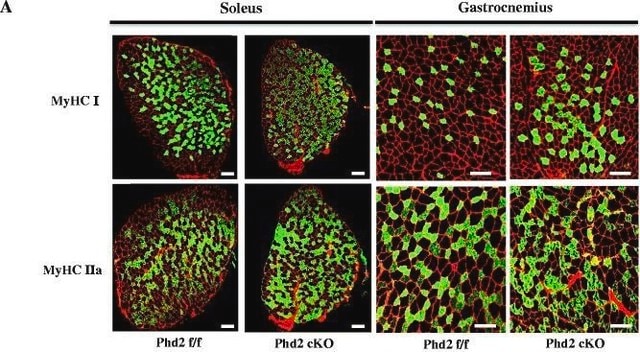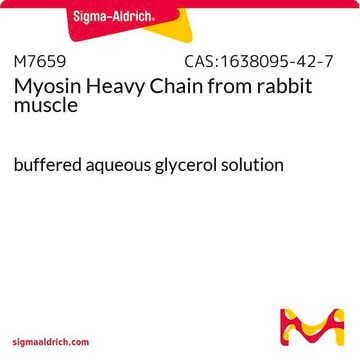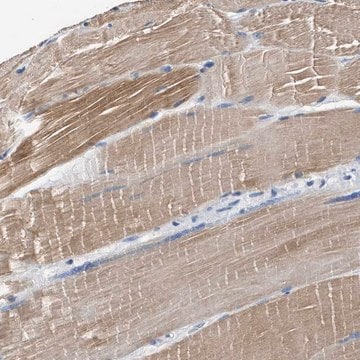A4335
Monoclonal Anti-Myosin (Skeletal, Fast)−Alkaline Phosphatase antibody produced in mouse
clone MY-32, purified from hybridoma cell culture
Sinonimo/i:
Monoclonal Anti-Myosin (Skeletal, Fast) antibody produced in mouse
Scegli un formato
Scegli un formato
About This Item
Prodotti consigliati
Origine biologica
mouse
Coniugato
alkaline phosphatase conjugate
Forma dell’anticorpo
purified immunoglobulin
Tipo di anticorpo
primary antibodies
Clone
MY-32, monoclonal
Stato
buffered aqueous glycerol solution
Reattività contro le specie
rat, chicken, rabbit, mouse, human, bovine, guinea pig, feline
tecniche
direct immunofluorescence: 1:150 using formalin-fixed, paraffin-embedded human or animal skeletal muscle sections
Isotipo
IgG1
N° accesso UniProt
Condizioni di spedizione
wet ice
Temperatura di conservazione
2-8°C
modifica post-traduzionali bersaglio
unmodified
Informazioni sul gene
human ... MYH1(4619) , MYH2(4620)
mouse ... Myh1(17879) , Myh2(17882)
rat ... Myh1(287408) , Myh2(691644)
Cerchi prodotti simili? Visita Guida al confronto tra prodotti
Descrizione generale
Specificità
Immunogeno
Applicazioni
Azioni biochim/fisiol
Stato fisico
Esclusione di responsabilità
Non trovi il prodotto giusto?
Prova il nostro Motore di ricerca dei prodotti.
Prodotti correlati
Codice della classe di stoccaggio
10 - Combustible liquids
Classe di pericolosità dell'acqua (WGK)
WGK 2
Scegli una delle versioni più recenti:
Certificati d'analisi (COA)
Non trovi la versione di tuo interesse?
Se hai bisogno di una versione specifica, puoi cercare il certificato tramite il numero di lotto.
Possiedi già questo prodotto?
I documenti relativi ai prodotti acquistati recentemente sono disponibili nell’Archivio dei documenti.
I clienti hanno visto anche
Filtri attivi
Il team dei nostri ricercatori vanta grande esperienza in tutte le aree della ricerca quali Life Science, scienza dei materiali, sintesi chimica, cromatografia, discipline analitiche, ecc..
Contatta l'Assistenza Tecnica.








